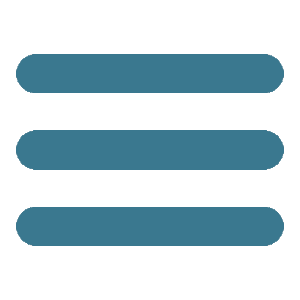January 7, 2015: France lives the bloodiest attack over the last fifty years. The news spreads quickly. Live coverage everywhere, from broadcasters to the web editions of newspapers. Hundreds, thousands of images pour in to all channels of information, they invade our eyes, and they overlap with the claim to relate what is happening. More or less simultaneously, in Nigeria, a couple of thousands of men, women and children were exterminated by the attacks of Boko Haram. Of them, however, there are no photographs. Only when the French tragedy has ended some satellite images of the villages appear razed to the ground.
In obvious disparity
agenda setting of the Western media in addressing the two events, there are inevitably some considerations which surface about the iconic plan. The first concerns the temporal and spatial filters applied. The flood of real-time images that say very little of what is happening in France, contrasts the absence of images of the events in Nigeria. On the one hand there is the illusion of proximity to the events, on the other, when they are made public, the satellite images. Of course, upstream of these choices, there are the different possibilities of access to the iconic documentation. Equally certain, though, is that the consequences are significant in terms of communication in the first place and that of the involvement of the viewer in the second instance. In particular, the amount of images of the events in Paris deserves attention, especially in the light of the words of David Levi Strauss who, in 2003, wrote about the mass of images that assails us: «They twinkle before our eyes, penetrate our minds at an incredible rate. We spend more time to collect and catalogue images than looking at them one by one» (1). This general reflection, in relation to a specific case like that in France, amounts to saying that the media have worked to convey to the viewer the illusion of a live participation in events. In this sense, the rotation of the images on web newspaper headings responds both to the need to keep the cataloguer attention alive and to feed the perception of the live coverage from the field.
The political dynamics of the background is anyway as ancient as the history of man. A large group of people is more easily combinable if you serve them up a common enemy as a meal. In this sense, the easy reading of the clash of cultures in religious terms is a unifying factor and involvement to the consent of extraordinary power. It is no coincidence, that in the aftermath of the attacks both president Hollande (+ 21%) and the premier Valls (+ 17%) would increase the respective indices of popular support considerably, reversing the trend to free fall made in recent months.
Without any claim of final analysis, it is worth reflecting on the management, always at an iconic level, that for example the online edition of
Le Monde had from the crisis.
After the massacre in the editorial office of Charlie Hebdo, while the hunt was going on for the two attackers, first a policewoman is killed and then people are taken hostage in a kosher supermarket.
|
|
A wave of generalised alarmism follows which destabilises the public opinion. In the openings of Le Monde, 9 January 2015, the reaction of the wounded animal is to bring up images in which symbols of strength and reaction stand out. The focus then moves in the early morning on a sharpshooter, where the framing enhances his combat gear and technology he has available on him, making evident the sniper rifle with clear symbolic values. The message is clear: «We are in an emergency, but now everything is under control and we have the means to react and eliminate the problem». About eight hours later, in the afternoon, a deserted road comes into view in the foreground six officers with helmets on their heads and machine guns to hand are clearly seen. Again the message and symbols used are not too veiled: «There is total control of the situation, and the only masters of the field are the representatives of the State». It is important to note, among other things, that the attackers would have acted with weapons of a similar category to those brandished by the police in the photograph. Making light of the symbolic level you can also catch a glimpse in the ostentation of the weapons an attempt to reiterate a statement of ancestral flavoured superiority.
Another couple of hours pass and the kosher supermarket is stormed, the hostages released and the terrorist killed. The image is that of the explosion before the eruption of the Special Forces. The message is that of the end of a nightmare, stressed by the values of power and superiority implicit in the image itself of the explosion. At a symbolic level in that explosion the pride of the world Power, humiliated by three men armed with Kalashnikovs, has been cured, the honour redeemed in blood and fire.
A notation to conclude. The communication, knowingly or accidentally, is continuing its work with the subtexts also in the following days. After eleven days the opening of Le Monde online edition resurrects in the early morning the… reassuring image of policemen deployed on the deserted street. But this time though the framing is wider, a clear sign of a cut in the first use that could open discussion on the ethical use of images on the part of the headings. Moreover, the temporal filter justifies the removal of the point of view, although calling into question the mechanism of redundancy, widely used in advertising and political propaganda.
In a world of information in which the use of the image is massive, it is natural to ask what role compared to the memory they have, especially if you project the question in the future. Given the speed and compulsiveness with which images are consumed nowadays, what will be the story of our times that will mark posterity?
[ Sandro Iovine ]
--------------------------------------------
(1) - David Levi Strauss, Politica della fotografia, Postmedia, Milano, 2007; pag. 139.
|

 home
cover ▼
opinions
news ▼
portfolio
post.it
post.cast
video
ongoing
thematicpaths
googlecards
FPtag
home
cover ▼
opinions
news ▼
portfolio
post.it
post.cast
video
ongoing
thematicpaths
googlecards
FPtag




